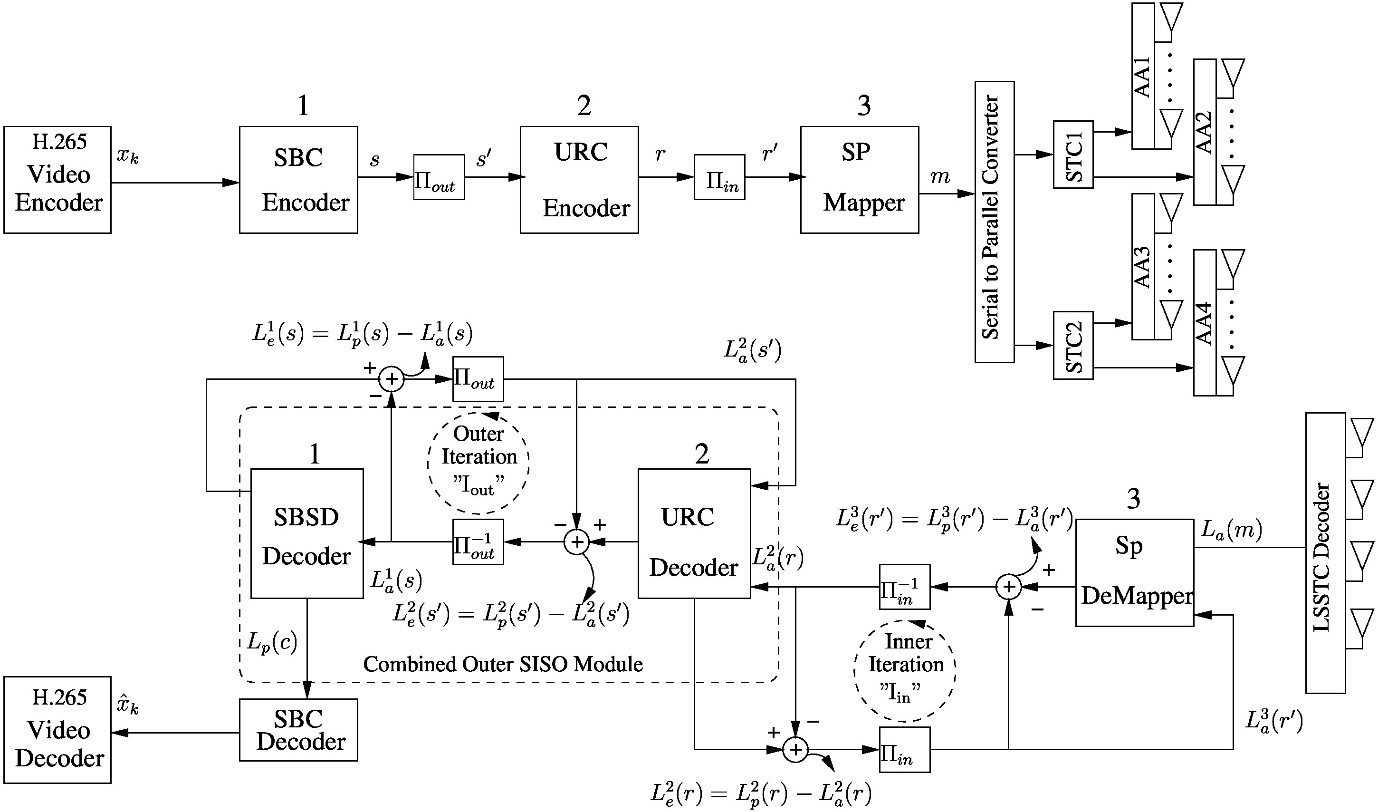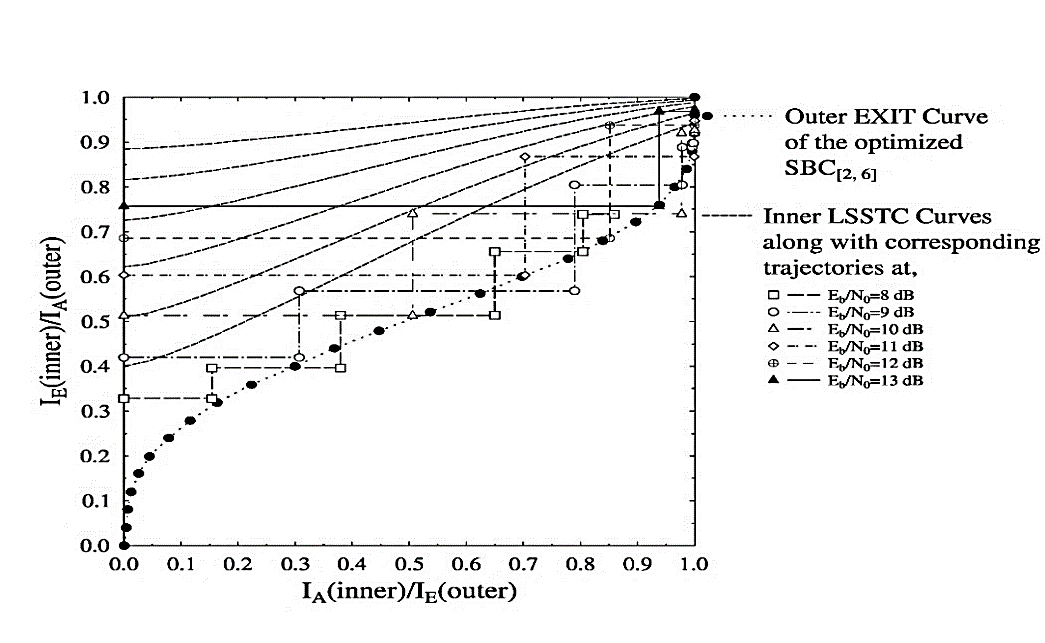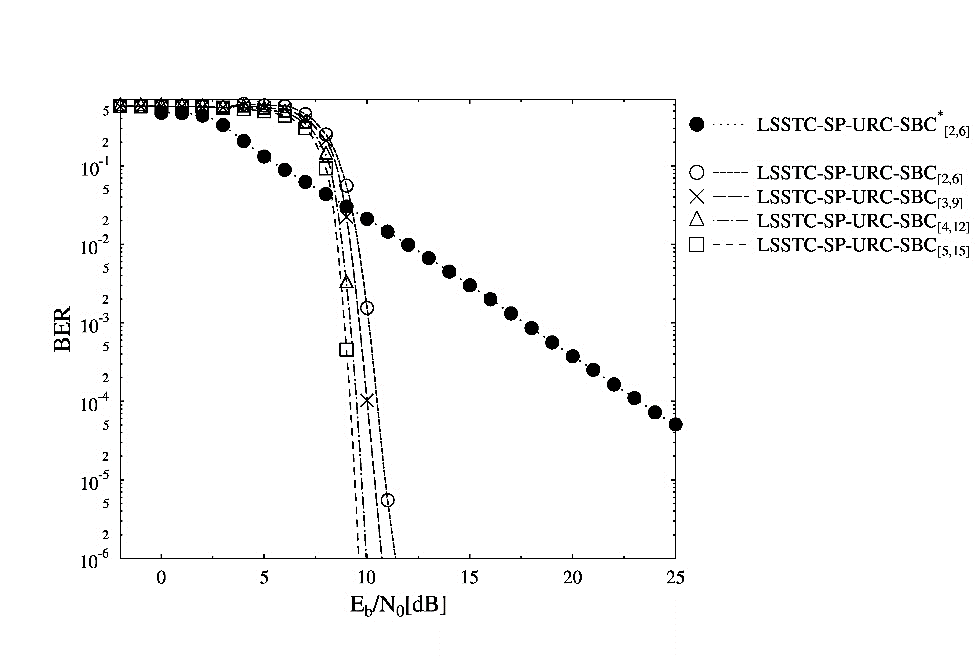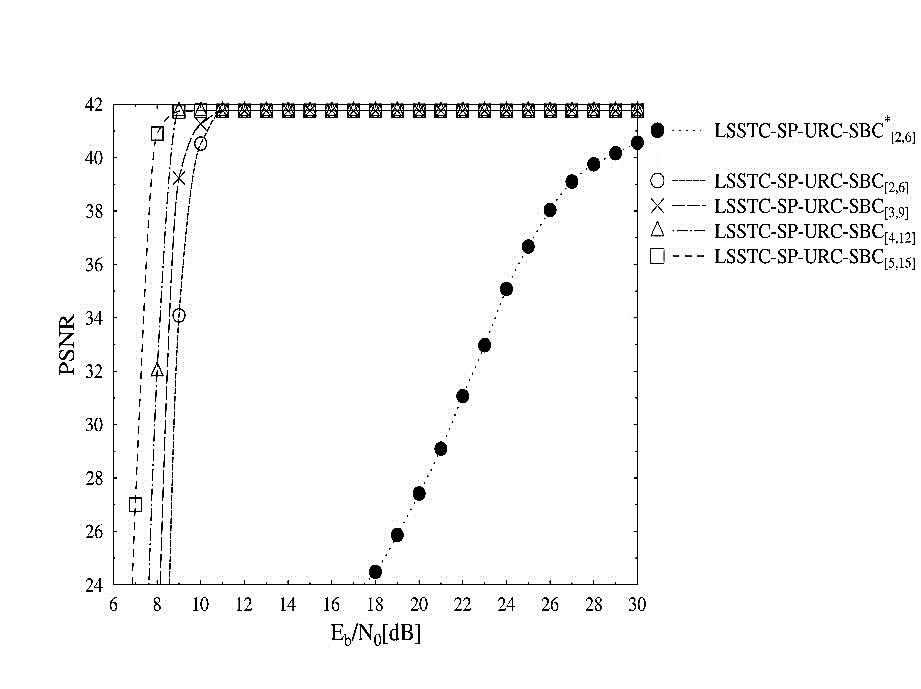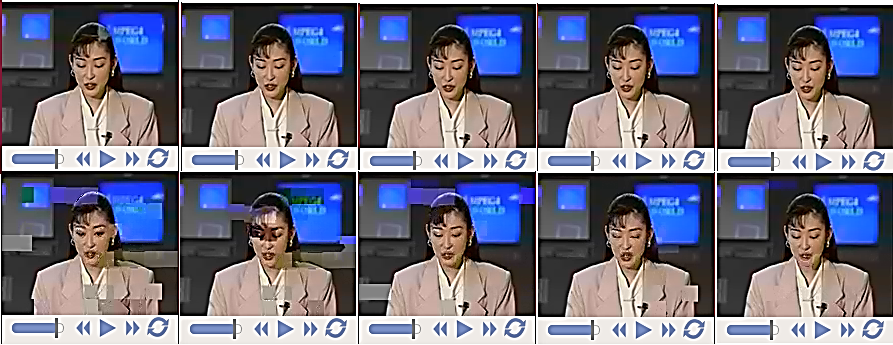Averting BER Floor with Iterative Source and Channel Decoding for Layered Steered Space-Time Codes
Published In: Sensors Impact Factor: 3.576
Abstract:
The widespread development in wireless technologies and the advancements in multimedia communication have brought positive impact upon the performance of wireless transceivers. We investigate the performance of our three-stage turbo detected system using state-of-the-art High Efficiency Video Coding (HEVC), also known as the H.265 video standard. The system makes use of Sphere Packing (SP) modulation with the combinational gain technique of Layered Steered Space-Time Code (LSSTC). The proposed three-stage system is simulated for the correlated Rayleigh fading channel and the Bit-Error Rate (BER) curve obtained after simulation is free of any floor formation. The system employs low complexity Source-Bit Coding (SBC) for protecting the H.265 coded stream. An intermediate recursive Unity-Rate Code (URC) with an infinite impulse response is employed as an inner precoder. More specifically, the URC assists in the prevention of BER floor by distributing the information across the decoders. There is an observable gain in the BER and Peak Signal-to-Noise Ratio (PSNR) performances with the increasing value of minimum Hamming distance (d_(H, min)) using three-stage system. Convergence analysis of the proposed system is investigated through EXtrinsic Information Transfer (EXIT) chart. Our proposed system demonstrates better performance of about 22 dB than the benchmarker utilizing LSSTC-SP for iterative source-channel detection, but without exploiting the optimized SBC schemes.
